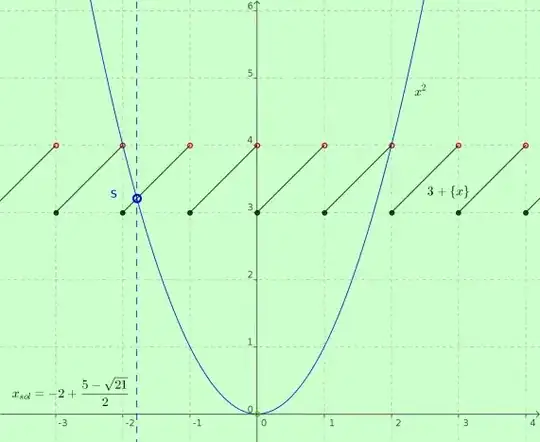Problem. Solve the equation $$ x^2 - 3 - \operatorname{frac}(x) = 0 $$
I tried to solve this question by moving $3$ to the other side:
$$x^2 - \operatorname{frac}(x) = 3$$
Since the fractional part of R.H.S. is $0$,
$$ \operatorname{frac}\left(x^2\right) = \operatorname{frac}(x) \qquad\text{or}\qquad \operatorname{frac}\left(x^2\right) = 1 - \operatorname{frac}(x).$$
Since there is only 1 case for $\operatorname{frac}(x^2)=\operatorname{frac}(x)$ which is $\operatorname{frac}\left(x^2\right)=\operatorname{frac}(x)=0$ and no value of $x$ satisfies the equation, we can rule this condition out. We are left with $\operatorname{frac}\left(x^2\right)=1-\operatorname{frac}(x)$ and $x$ is negative, but I am stuck here.
Can anyone please give me an idea to proceed with this question?
